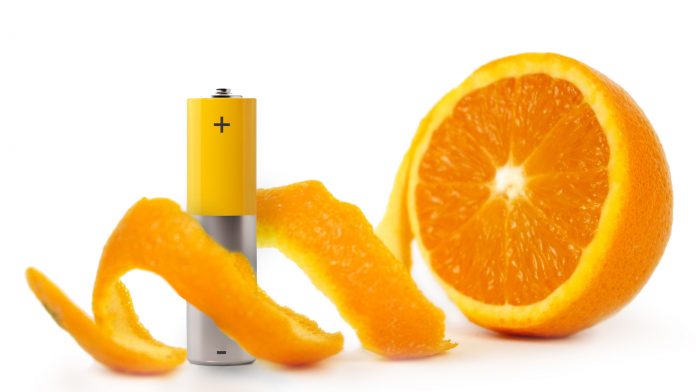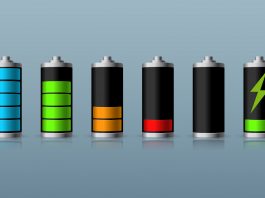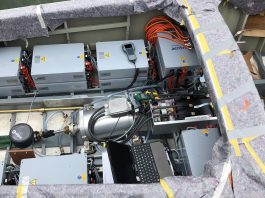Research led by Nanyang Technological University, Singapore, has developed a method of extracting precious metals from lithium-ion batteries, using waste orange peel.
The team created functional batteries from the extracted materials, creating minimal waste in the process. This new approach not only tackles the issue of electronic waste, but also addresses food waste.
When food waste begins to rot it releases a large volume of methane gas which is 25 times more harmful for the environment. By repurposing this for the extraction of precious metals, Nanyang Technological University researchers can limit the amount of orange peel and spent batteries polluting the environment. Conventional battery recycling methods, such as smelting, are responsible for the emission of toxic gases and pose a safety risk to most ecosystems.
Professor Madhavi Srinivasan, co-director of the NTU Singapore-CEA Alliance for Research in Circular Economy (NTU SCARCE) lab, said: “Current industrial recycling processes of e-waste are energy-intensive and emit harmful pollutants and liquid waste, pointing to an urgent need for eco-friendly methods as the amount of e-waste grows. Our team has demonstrated that it is possible to do so with biodegradable substances.”
Combating battery waste
This process involves shredding and crushing spent batteries to form a crushed material called ‘black mass’. Researchers then extract valuable metals from black mass by dissolving it in a combination of orange peel that has been oven-dried and ground into powder, and citric acid, an acid found in citrus fruits, before letting the metals precipitate. In lab experiments, the team found that their approach successfully extracted around 90% of cobalt, lithium, nickel, and manganese from spent lithium-ion batteries.
Assistant Professor Chor Yong Tay explained: “The key lies in the cellulose found in orange peel, which is converted into sugars under heat during the extraction process. These sugars enhance the recovery of metals from battery waste. Naturally-occurring antioxidants found in orange peel, such as flavonoids and phenolic acids, could have contributed to this enhancement as well.”
Importantly, solid residues generated from this process were found to be non-toxic, suggesting that this method is environmentally sustainable. From the recovered materials, they then assembled new lithium-ion batteries, which showed a similar charge capacity to commercial ones. Further research is underway to optimise the charge-discharge cycling performance of these new batteries made from recovered materials.









